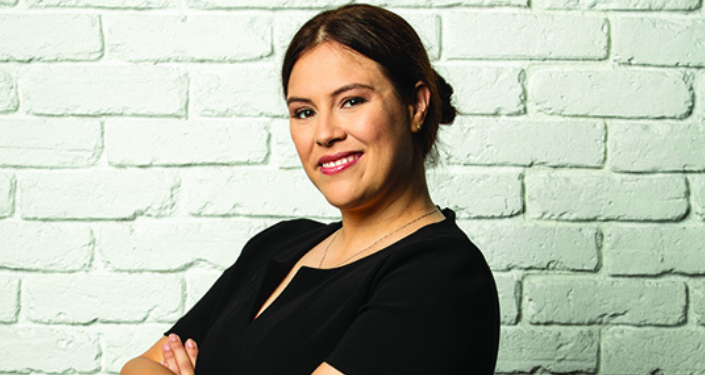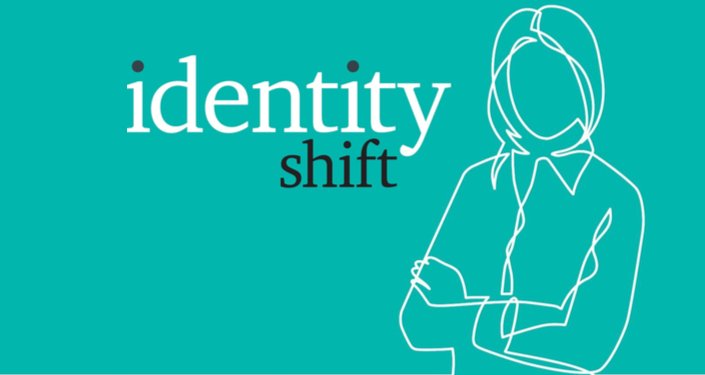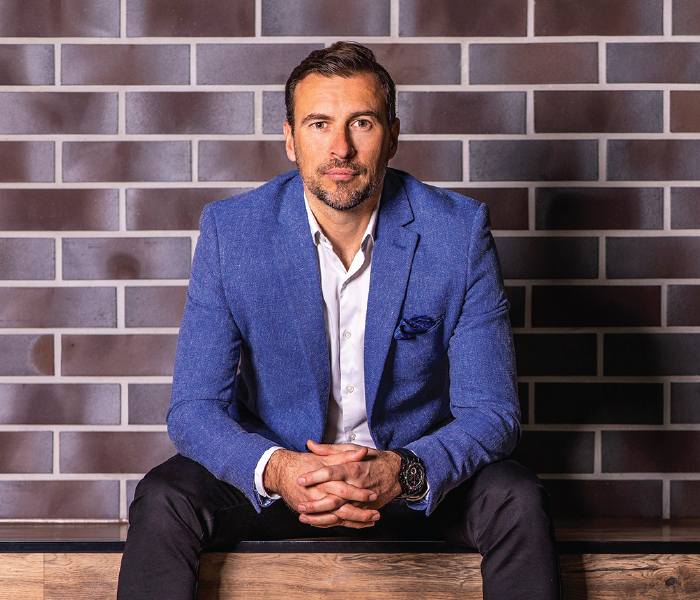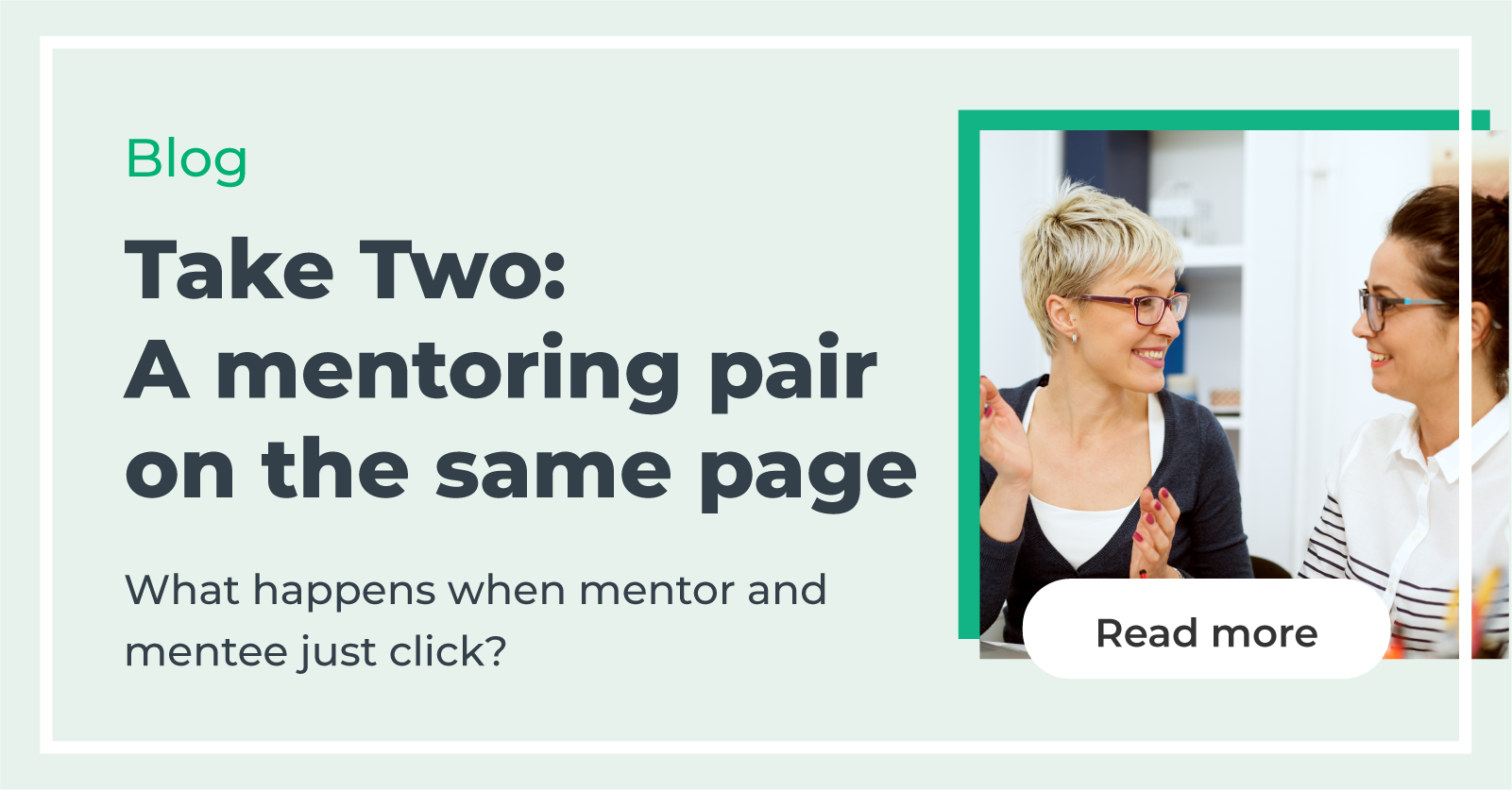Jasmin Craufurd-Hill FIML is a leader who wears many hats. IML ANZ chief executive David Pich CMgr FIML caught up with her to discuss leadership, volunteering and the future of energy.
Continue readingIdentity shift: secrets to successful career transitions
Switching careers is perfectly possible with the right plan in place.
Continue readingFostering culture in a remote workforce
How do leaders unite their people around a shared vision and values, when they include remote workers?
Continue readingReal rest: Switch off from work and feel good
By Jane Caro
We live in an era that worships work. Far too many of us believe that unless we are actively doing something every waking moment, we are wasting time. Many people feel guilty about scrolling aimlessly through social media, whiling away an afternoon (or even a whole day) binging on a TV series and/or nodding off on the couch.
I am not one of those people. We all have our gifts and my ability to be completely idle without guilt is one I value dearly.
Such is our worship of work that we even turn attempts to relax into a form of pressure. Wellbeing, mindfulness, meditation (yes, yes, I know they benefit many) are far too worthy and earnest for me. I don’t want to be lazy and do nothing because it’s good for me (even though it is). I want to do it because I like it and my joy in skiving off is actually enhanced by a messy house, laundry that needs doing or dishes that need washing.
SLAVE DRIVER
Perhaps this is also because I work for myself and I have never had a more demanding boss. She (me) is always taking on more work, agreeing to impossible deadlines and working on weekends. She says yes to far too much. Some of it unpaid! This slave-driver (me) is the reason I feel entitled to rebel against her (myself) on a regular basis and collapse on the couch, Netflix remote in hand and give myself over to blissful self-indulgence.
If you run a small business or work as a freelancer or subcontractor, you will know how hard it is to carve out a little time for yourself. If you are not actively working, you are accounting for that work, taking care of the inevitable admin tasks or you are actively seeking more work. It is hard to escape the nagging sense of guilt whenever you’re not actively engaged. But, take it from me, it is necessary both for you and your business. Let’s not even mention your family.
Recreation is a word that we no longer understand. It literally tells you to re-create yourself through activities – or lack thereof – that have no purpose but fun. It is no accident that creativity is part of the word. If you work till exhaustion, if you haul yourself miserably through every day or even most days, your productivity will fall. You are not at your best. Your heart is no longer in it. You’ve lost sight of why you started your business in the first place.
LOVE WHAT YOU DO
Every successful small business has one important similarity – a principal who loves what they do. Now, that doesn’t mean you have to love it every day, or love every task, or even every customer, but you have to love what you do and what you provide – at least most of the time. The paradox of hard work is that you can have too much of a good thing. If you lose your joy in your business for too long, you are at risk of eventually losing your business. When you lose joy, you lose creativity and the ability to come up with new solutions.
We have an epidemic of anxiety in our modern world, brought on for many, I believe, by overwork. Exhaustion is a result of working too hard for too long with no emotional reward. Exhaustion is useful to those who would control our world. Exhausted people, terrified of losing their income if they take so much as a holiday, are compliant people. It’s not just their businesses that become plodding and uninspired, it is their citizenship, their family lives and their view of the future. And, I know this is modern-day heresy, but I believe that if everyone worked 30% less, everything would improve. We’d be more joyful, rested, fun-loving, hopeful, generous, energetic and creative.
I know this is modern-day heresy, but I believe that if everyone worked 30% less, everything would improve.
Maybe the essential paradox of running your own business is that it may be the time when you let yourself lollygag, laze about, daydream and, yes, scroll aimlessly through social media, that is when you are able to have your best ideas and come up with solutions that all the agonising and late nights in the world will not liberate. You will also model sane behaviour to your employees so they too learn the value of rest and recreation, and so become more productive and enthusiastic. It isn’t the hours you put in that are of the greatest value. It may well be the hours you take out.
This article originally appeared in the December 2019 print edition of Leadership Matters, IML ANZ’s exclusive Member’s magazine. For editorial suggestions and enquiries, please contact karyl.estrella@managersandleaders.com.au.
Mastering social media
By Anthony O’Brien
In digital marketing much has been said about the importance of data to drive decision-making. Much less is said about gut feel.
Yet it was instinct – not analytics – that led advertising guru Wendy Thompson to strike out on her own and establish a social media agency a decade ago.
“I had a strong gut feeling social media would drastically change how people communicated with one another,”
Wendy Thompson
She was proven correct in the most dramatic way possible. Today, 3.2 billion people are using social media worldwide. And Thompson’s Auckland-based social media business, named Socialites, has gone from strength to strength. The agency works with clients across the globe including New Zealand, Australia, North America, Korea, Japan, China, Taiwan, and Singapore. Thompson explains, “There are 13 official employees and a network of approximately 30 contractors whom we work with day to day.”
Last year, the Auckland-based firm was named Australasian Social Media Agency of the Year. Thompson was also a finalist in Next Woman of The Year.
NAVIGATING A PATH TO GROWTH
While recruiting social media specialists in the early days was challenging, as a newly minted leader, Thompson discovered that retaining staff was just as arduous. “The first time people leave; you take it personally. But you learn over the years that it’s not about you. It’s about the job or their position in their lives. My attitude to staff leaving now is much healthier.”
Thompson started her business with some start-up experience. “I ran a physiotherapy practice with my husband, which enabled me to learn a lot about running a business,” recalled Thompson. That said, the former advertising pundit found being the sole owner of a business presented several unique challenges. “In the first few years, you did everything. And then, as we picked up a reputation and improved our systems and processes, things have grown, which has been lovely. We go through ups and downs. But in general, it’s awesome. I even brought on a business partner a few months ago.”
Socialites new co-owner Melanie Spencer has started as a managing partner and will be responsible for overseeing the team and the day-to-day operations of the agency. Spencer’s appointment will enable Thompson to work on the business and its plans for more Asia-Pacific expansion. “Bringing in a partner is a big decision. However, when you meet the right person, it’s a lot like a marriage.”
NOT A NATURAL LEADER
As a leader, the self-effacing Thompson describes herself as “sucky.” “I’m not a natural leader. I don’t know if anyone is, but I have completed a lot of leadership development, training, and reading.” Thompson nominates Drive by Daniel H. Pink as the best book on motivating teams she’s read. The social media whiz has also undertaken the Gazelle strategic training program to assist her management style. “Being a leader is not easy, but it’s enriching. There’s something about a team coming together, and it feels like family.”
Thompson describes the working culture at Socialites NZ as high performance. “We say we’re all A-players and one of the best things that I’ve learned over the years, is to hire slow, fire fast.”
Thompson continues, “Also, probably another significant learning is that someone might be fantastic and brilliant when they first come on board. But then, as your company grows, they’re not the right person anymore.”
Thanks to her evolution as a leader, Thompson is adamant she’s not a micromanager, which the appointment of Spencer corroborates. “I do have a pretty strong vision of how things should be. I also go on gut a lot, and encourage my team to listen to their gut, which makes for an interesting and dynamic way of working.”
CONSISTENCY BREEDS TRUST
Since 2010, Thompson has pursued a marketing strategy based on thought leadership to grow the profile of Socialites NZ worldwide and to attract more business-to-business clients. “We still get work from blog posts we wrote two years ago,” she explains.
Consistency is another crucial ingredient in Socialites’ business-to-business marketing success. “The work I’ve done over the past 20 years, and the work the company has done over the previous nine, gives us work now.
“We have competition from huge companies and small start-ups. But our consistency makes us strong. We do consistently good work and are very trustworthy. With us on board, our clients know we will propel them to success every single time.”
This article originally appeared in the December 2019 print edition of Leadership Matters, IML ANZ’s exclusive Member’s magazine. For editorial suggestions and enquiries, please contact karyl.estrella@managersandleaders.com.au.
Connecting with the people of the forest
By Karyl Estrella MIML
Nowhere else can you find orangutans in the wild except in the rainforests of Borneo and Sumatra. So the rare opportunity to see these magnificent creatures in their natural habitat is a genuinely thrilling prospect. A privilege that Core Laboratory Manager at Pathology Queensland, Lara Keller CMgr FIML, enjoyed as a Regional Representative for The Orangutan Project (TOP). “In May this year, I saw the Bukit Tigapuluh ecosystem in Central Sumatra. That was absolutely amazing because only eight people a year enter this conservation site,” recalls Keller. The area is inaccessible to tourists with visits reserved for those able to travel with TOP founder and President, Leif Cocks, while he monitors and evaluates the organisation’s work there.
INSPIRATION
Visits to the orangutan’s rainforest homes are exciting, but that’s not the primary motivation for Keller to volunteer. “In 2017, during a fundraiser for TOP, I got to hear Leif speak about the work they were doing. I’ve always been a massive animal lover and am fascinated by orangutans. They are intelligent, peaceful and sentient creatures, and are Critically Endangered. At that point, I wanted to do something to help, so I decided to volunteer.”
When not visiting remote rainforests, Keller’s activities are less adventurous, albeit very crucial. “Our main goal is to raise the profile of orangutan conservation,” says Keller. “So we do market stalls, attend festivals and visit schools to talk about how people can support the work. We also sell cookies, cakes, books and orangutan toys to raise funds on top of inviting people to adopt rescued orangutan orphans.”
Not only have these activities supported the charity’s ongoing efforts to rescue and rehabilitate orangutans, but they have also opened Keller up to a variety of audiences. “Recently, we visited a kindergarten. I wouldn’t be speaking to kindergarten children in my day job! But it’s a different kind of leadership experience for me.”
Volunteering has indeed helped Keller view leadership from a different lens. “It’s taught me a lot about how to adjust my leadership style and to take into account people’s motivations.” Contrasting her role as a health sector leader to her role as a volunteer leader, Keller hones in on the need to become a positive influence.
“Volunteers have no obligation to meet any targets as paid employees do. Ultimately, I must make them want to join me. They have to feel that we are all working towards something important together.”
WILD ENCOUNTERS
Although given TOP’s unique position, it can be difficult to get a real sense of their work’s impact. Unlike most Australian charities whose work is based on home soil, all the results of the organisation’s efforts are only seen and felt in Indonesian rainforests. That’s why meeting the orangutans was a truly memorable experience for Keller.
On one outing to Central Kalimantan in Borneo last year, she witnessed the rehabilitation of young rescued orangutans in what TOP affectionately calls ‘jungle school’. “They were learning to climb trees, and one of them fell out of the tree and cried out like a baby,” Keller recalls. “It looked like he’d broken his arm, so they put on a splint and took this little one to the closest town, which is an hour and a half away. He got x-rayed, and fortunately, he didn’t fracture his arm and was back to climbing trees in no time.
“During the trip in May this year we saw mothers and babies who have been released back into the rainforest. When we reached a different part of the camp, I recognised one of our adopted babies, Citrawan, as she attended jungle school. I’ve seen so many photos of her and spoke about her to so many people. It was amazing to see her face-to-face. These are the moments not many people get to experience.”
Keller considers her volunteer work as a privilege, offering a unique sense of fulfilment. “You can go see orangutans in captivity, but seeing them in the wild is a completely different experience,” explains Keller. “I’ve looked them in the eyes and seen the person inside. And that’s how I view them, as persons.” Almost literally true when you consider that the word ‘orangutan’ in the Malay language translates to ‘person of the forest’.
It’s no surprise then that Keller recommends volunteering for all leaders. Her advice, “Find something you’re passionate about.” She also recommends doing your research and finding out what the commitment involves. The effort, Keller believes, is all worth it. “It’s been a marvellous thing for me. I feel this is something I do to reach my potential as a person. Giving something back and doing something for my soul makes me feel refreshed and excited. I love it!”
PRECIOUS CREATURES
Today, there are only 104,700 Bornean orangutans, just 7,500 Sumatran orangutans and no more than 800 Tapanuli orangutans – the most endangered of all the great apes.
For more information about The Orangutan Project and their conservation work visit orangutan.org.au.
This article originally appeared in the December 2019 print edition of Leadership Matters, IML ANZ’s exclusive Member’s magazine. For editorial suggestions and enquiries, please contact karyl.estrella@managersandleaders.com.au.
Reinventing business structure
By Jason T Smith
It’s often said that if you keep doing the same thing then you shouldn’t expect a different result. For more than a decade, I led my franchised physiotherapy business, the Back In Motion Health Group, with a traditional vertical organisational structure that mostly worked… up to a point, anyway. But I felt we could do much better.
Our model was unintentionally suffocating talented people through hierarchy and self-limiting position descriptions. Job titles and lines of reporting became discriminatory. Strategy and decisions were mostly formulated in a linear, top-down fashion. Conversations happened behind closed doors. Without noticing it, elitism and class divisions crept into our workplace. People were being artificially designated into executive, management and support strata. Influence was driven more by seniority and position, than by intelligence and merit. Creativity was dying.
The organisational structure that we had was quite normal – the traditional pyramid – but it certainly wasn’t optimal. Especially given that I was just about to set an unreasonable objective of doubling our group footprint over the next three years. We affectionately dubbed it ‘7/50/100’. It was the aspiration to have our brand accessible in seven states and territories of Australia, delivering $50 million worth of physiotherapy and related services, through 100 locations. So, it became time to shake things up.
3D MODEL
We didn’t just turn the traditional pyramidal organisation chart upsidedown as some have attempted. It wouldn’t have worked. We didn’t quite go flat or matrix in our management approach either. This was more about a change in our inner state, than it was a governance strategy. We needed to think, talk, and behave differently. We rounded out our organisational model into a threedimensional spherical expression with no top and no bottom.
Congruent with the spirit of innovation that characterised the change, we gave our new way of life its own name: ONEteam™.
We bounced forward. Or, as management literature might refer to it, we generated ‘adversarial growth’. We evolved through the pain of failures in the past, driven by the hope of the future. We reset our culture around the imperatives of over leadership and under-management. People had their titles stripped, and we dismantled traditional job descriptions. Colleagues were grouped into ‘functions’ and ‘pods’, and people no longer reported to a ‘boss’. We all served the mission rather than a (wo)man.
A MINIMALIST MOVEMENT
The principles of collaboration, distributed authority, and peer accountability became paramount. Individuals identified their best contributions to the workplace, kept their role profiles fluid to ensure agility and adaptability to changing demands, and no longer needed permission to get the job done. Performance was assessed in real time, financial records were laid bare, and strategic workflow became streamlined into the essentials. Minimalism reigned, as we sought to build a champion team, rather than a team of champions.
We even allowed peers to set their own remuneration bands within an overall salary cap, assist in the hiring and firing decisions, and decide their own bonus and incentive reward systems. Why? Because the owners can only guess what their people are motivated by, and inevitably will get it wrong some of the time.
We pulled down office walls, changed seating configurations to cluster people into more functional arrangements, and built additional breakout and meeting rooms. Reserved car parks were opened to all staff on a first-come basis, and we all shared the kitchen cleaning roster.
Even our meeting formats got challenged. We wanted less of them, and more decisions within them. Only those people with a contribution to make or an outcome to achieve were expected to attend. Every meeting was minuted and published for the whole team, with no secret business or hidden agendas.
A REAL SHAKE UP
In short, most things in our once-traditional workplace changed. Only a few essentials remained. We got turned outside-in and downside-up. A real shake up. But this change wasn’t haphazard or poorly considered. It was a metamorphosis of careful design. An intentionally new structure.
We bred a race of corporate freedom fighters. We fought against our own traditions, our flawed habits, and our ineffective strategies of the past. Today, we have achieved brand presence in more than seven states or territories, generated revenues in excess of AU$50 million per annum, and host more than 110 locations in Australia and New Zealand.
Our leadership revolution revealed an authentic and scalable way to give each team member the freedom to do what they love and excel at it. And in facilitating this, we gained so much more.
Jason T Smith is the founder of the Back In Motion Health Group, the Iceberg Leadership Institute and the SOS Health Foundation. In his book, Outside-In Downside-up Leadership (Major Street Publishing AU$29.95), Smith shares how he and his colleagues found the sweet spot between authentic collaboration and the holy grail of peer accountability in their workplace.
This article originally appeared in the December 2019 print edition of Leadership Matters, IML ANZ’s exclusive Member’s magazine. For editorial suggestions and enquiries, please contact karyl.estrella@managersandleaders.com.au.
Take Two: A mentoring pair on the same page
By Lisa Calautti
When marketing manager Emma Tune MIML decided to seek a mentor, IML ANZ teamed her up with business advisor Sarah Hunter FIML. It turned out to be the perfect match.
Why did you decide to join the Member Exchange program?
Sarah Hunter: Mentoring is something I do quite a bit anyway. It is definitely a giving back exercise. I enjoy helping people who are at an earlier career stage to jump ahead – you think of all the things you know now, that you wish you had known 10 or 20 years ago.
Emma Tune: I have always been fortunate in having managers and colleagues who have been generous in sharing their time, knowledge and skills with me. But I didn’t have anyone within the business who had a marketing background. Things have changed so much in marketing in the time I have been in my role, so I sought the opportunity to learn from someone with that background and experience.
How would you describe the experience of being part of Member Exchange?
SH: Very good. In fact, at our first meeting we were quite overcome by how well matched we had been. We just clicked right from the beginning and it was clear that what Emma needed, and what I had, were extremely well aligned.
ET: We were so well matched. There were so many similarities in my role and Sarah’s experience. We talked the same language.
What did you gain from the program?
SH: A bit of clarity of thought. I had to put myself in some circumstances and try not to see things from my perspective or through my own lens. That wasn’t too hard because I was not making decisions, setting direction or giving instructions; just listening and offering reading material or an avenue to follow, then letting Emma do it herself. I had the satisfaction of seeing someone grow and develop, knowing some of the things I had put in front of her were helping her do that.
ET: Sarah was great at recommending resources and frameworks for the different situations and challenges that I had. We talked about many aspects of my role and having an outside perspective helped me to reframe the issues in many cases. Sarah was great at challenging my thinking in a constructive way. Overall I learned that in almost all cases it comes down to people and process. Having recommended resources to use also gave me something tangible I could work with.
One of the key areas that kept coming up was the importance of people management. In my head I already knew this but, through our discussions, I realised there is so much more to it than just managing a team of people. In business it is important to manage relationships at all levels across the business. Another key learning was that seeing the business from an outside perspective makes you look at the bigger picture, which is so important, but hard when you get caught up in the busy day to day.
What motivated you to be involved in Member Exchange?
SH: Definitely giving back, and being someone who can help build confidence. Emma taught me that really everything is all about people. No matter what business, industry or stage of life, it all goes back to being about people.
ET: I enjoy learning from people and seeing different perspectives. It had been many years since I had taken part in a formal mentoring program and thought it was the right time for the stage I was at in my career.
Would you recommend the program to others?
SH: Yes, I recommend people get involved in mentoring as it is an opportunity to look at things in different ways. This program is a valuable part of the membership for IML ANZ. It has a really good point of difference in bringing together a huge cohort of diversity, experience and insight. Working with younger managers I can see through their eyes the challenges they are facing today, which are not always the same challenges I was facing at that career stage.
ET: Yes, just getting that outside perspective is invaluable. People who are mentors go into it because they want to share their knowledge and coach and help you. By being matched with someone who has experience in areas you identify with, you are set up to succeed straight away.
Find out more about Member Exchange
Australia: managersandleaders.com.au/mentoring-program
New Zealand: managersandleaders.co.nz/mentoring-program
This article originally appeared in the December 2019 print edition of Leadership Matters, IML ANZ’s exclusive Member’s magazine. For editorial suggestions and enquiries, please contact karyl.estrella@managersandleaders.com.au.
How can managers encourage open and honest feedback?
By Peter Cullen FIML
What are your first thoughts and feelings when someone comes up to you and mentions they would like to give you some feedback? Typically, our thoughts tend to sway towards the negative such as, “What have I done wrong?” or “Here we go again”. This could also be accompanied by feelings of anxiety, frustration or dread.
However, when we provide open and honest feedback, what we create is a sense of openness. Receiving feedback becomes an engaging and supportive process when what’s best for both parties is taken into consideration. It should be a positive and productive learning experience where improvement is required, and commendation provided. There should be no such thing as negative feedback.
A question I often ask during facilitation is, “How do you like to be asked to do something or receive feedback?” Typically, attendees say they prefer very clear communication with no ambiguity. All too often the recipient of the feedback feels uncomfortable and is left wondering what the purpose of the conversation really was. You can avoid this by keeping the following points in mind:
SET A CLEAR STRUCTURE
Clear expectations on the frequency and format of feedback meetings are essential. During feedback meetings, promote conversations that are open, honest and appropriately respectful. This applies for both one-on-one and team discussions. Use simple yet powerful questions during these meetings. Find out what is working well and why, then explore what can be improved and how. These feedback meetings may be scheduled or ad hoc.
WALK THE TALK
Role model the ideal behaviours of providing feedback to members of the team so they understand what it looks and feels like. Giving your time to people and being 100% present in the conversation can be very difficult when you have many priorities and time limits niggling away in the back of your brain. The discussion will not be taken seriously if you are distracted by emails, phones or other people. This is a quick way to lose respect and trust. Remember, whatever you do or say becomes permissible for others to do the same.
BUILD TRUST
A safe environment is created when mutual trust exists between people. Trust is established over time by our day-to-day behaviours in the workplace. When giving or receiving feedback, it’s important to stop, think and then respond rather than react. Other behaviours that help build trust include being calm, questioning rather than challenging, remaining patient and listening. If you are explaining why tough decisions had to be made, present it from a fact-based, business perspective.
STAY ON THE SAME PAGE
Seeking clarity is often overlooked, leading people to interpret the discussion differently from one another. To ensure everyone is on the same page, either restate what your understanding of the conversation is or ask the other person what their understanding of the discussion is. This will ensure any agreed actions are aligned with all parties involved. If a misunderstanding is identified at this stage, thank the other party for bringing it to your attention.
FOLLOW UP
Following up at agreed times on any decisions and actions is essential to ensure the desired outcomes are reached. This is also an opportunity to ensure you are on the right track and to reflect on the whole process.
When feedback is delivered in the right way at the right time, it is typically uplifting and motivating for everyone. If you want people to be honest with you, you need to be honest with them.
Peter Cullen is an education and training facilitator and Fellow of IML ANZ. He conducts three-day programs that engage participants in developing and implementing their capabilities as managers and leaders.
This article originally appeared in the December 2019 print edition of Leadership Matters, IML ANZ’s exclusive Member’s magazine. For editorial suggestions and enquiries, please contact karyl.estrella@managersandleaders.com.au.











